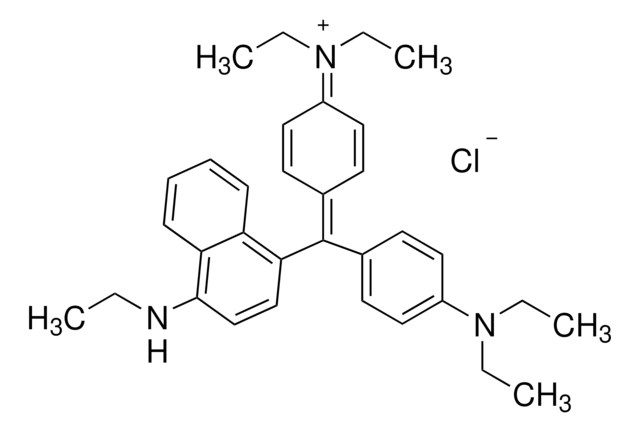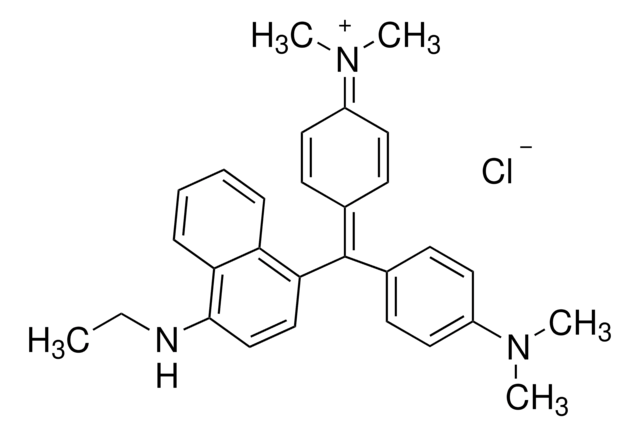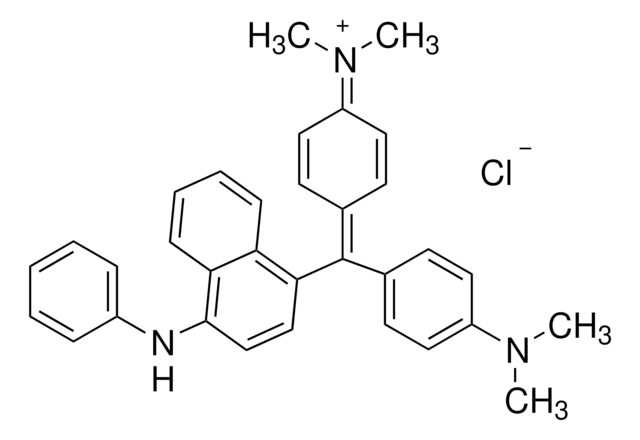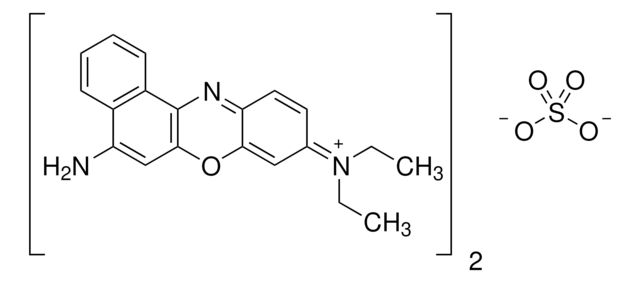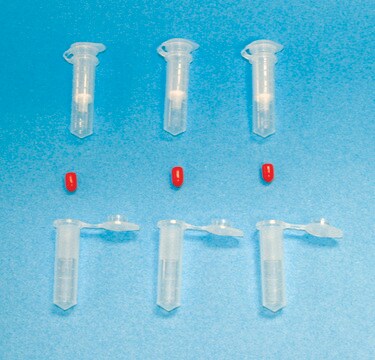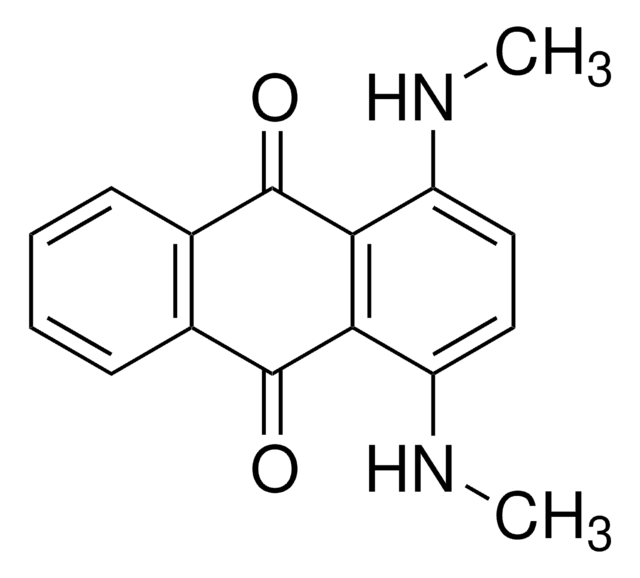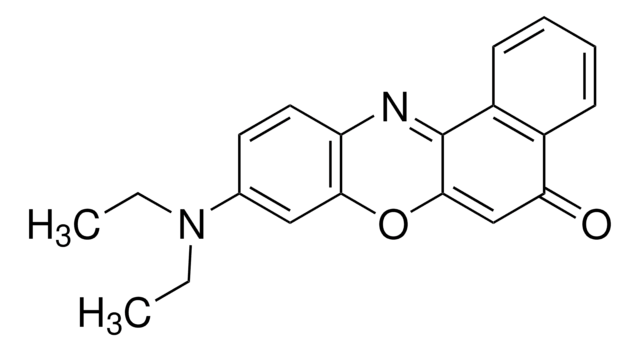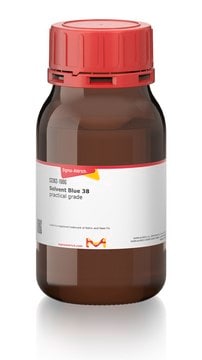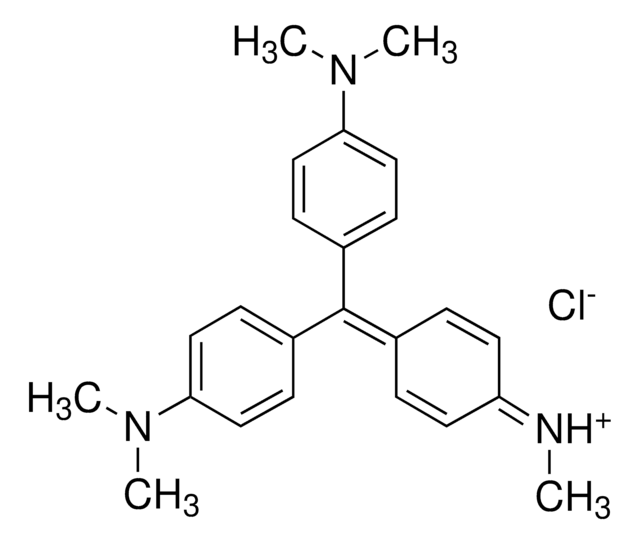230987
Victoria Pure Blue BO
Dye content 90 %
Sinonimo/i:
Basic Blue 7
About This Item
Prodotti consigliati
Stato
powder, crystals or chunks
Livello qualitativo
Composizione
Dye content, 90%
Solubilità
95% ethanol: 0.1%, blue to very deep blue
λmax
619 nm
applicazioni
diagnostic assay manufacturing
hematology
histology
Temperatura di conservazione
room temp
Stringa SMILE
[Cl-].CCNc1ccc(\C(c2ccc(cc2)N(CC)CC)=C3/C=C\C(C=C3)=[N+](\CC)CC)c4ccccc14
InChI
1S/C33H39N3.ClH/c1-6-34-32-24-23-31(29-13-11-12-14-30(29)32)33(25-15-19-27(20-16-25)35(7-2)8-3)26-17-21-28(22-18-26)36(9-4)10-5;/h11-24H,6-10H2,1-5H3;1H
ROVRRJSRRSGUOL-UHFFFAOYSA-N
Cerchi prodotti simili? Visita Guida al confronto tra prodotti
Descrizione generale
Avvertenze
Danger
Indicazioni di pericolo
Consigli di prudenza
Classi di pericolo
Acute Tox. 3 Oral - Aquatic Acute 1 - Aquatic Chronic 1 - Eye Dam. 1
Codice della classe di stoccaggio
6.1C - Combustible acute toxic Cat.3 / toxic compounds or compounds which causing chronic effects
Classe di pericolosità dell'acqua (WGK)
WGK 3
Punto d’infiammabilità (°F)
Not applicable
Punto d’infiammabilità (°C)
Not applicable
Dispositivi di protezione individuale
Eyeshields, Gloves, type N95 (US)
Scegli una delle versioni più recenti:
Possiedi già questo prodotto?
I documenti relativi ai prodotti acquistati recentemente sono disponibili nell’Archivio dei documenti.
I clienti hanno visto anche
Il team dei nostri ricercatori vanta grande esperienza in tutte le aree della ricerca quali Life Science, scienza dei materiali, sintesi chimica, cromatografia, discipline analitiche, ecc..
Contatta l'Assistenza Tecnica.